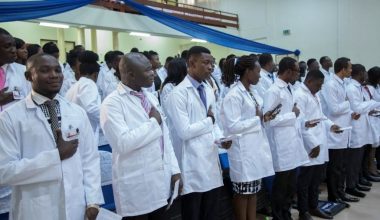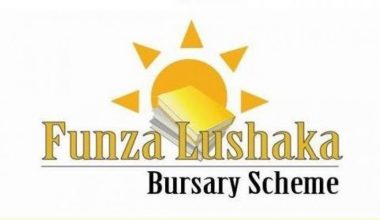Malta is one of the world’s smallest and most densely populated countries. Malta is an associate of both the Commonwealth and the European Union and benefits close bonds with the United Kingdom. It is a member of the European Higher Education Area.
People from different places around the world visit each year and are attracted by the stunning lagoons and beaches, water sports, pulsating nightlife, archaeological scenes.
For an overview of what this article contains, kindly go through the table of contents.
Study in Malta
The University of Malta Located at Tal-Qroqq is the main teaching institute of the State by which it is largely funded and is open to all those who have the necessary qualifications.
The degree courses at the University are premeditated to yield highly qualified professionals, with the skill of research, who will play key roles in industry, commerce, and public affairs in general.
The official languages adopted in the country are English and Maltese, but courses are taught in English.
International Focus
There are a large number of students including over a thousand global students (with 45 percent visiting students) from 92 diverse countries, undertaking full-time or part-time degree and diploma courses, several of them run on the modular or credit system.
A basic Foundation Studies Course aids international high school students who have finished their high school education overseas but who do not have the required entry requirements, to be eligible for admission to an undergraduate degree course at the University.
General Application Requirements
After selecting a course, applicants for undergraduate study may apply to courses during the year. Nevertheless, applicants are instructed to forward their application to the Admissions and Records Office as early as possible. The online application is also readily available for applicants.
The University takes Advanced Subsidiary Level certificates and Advanced GCE, the International Baccalaureate, the American Advanced Placement System and the Advanced International Certificate of Education (AICE).
Entry and VISA Registration
Malta is a member of the Schengen Area, but students from within the EU, EEA or Switzerland need a visa to study in Malta for more than three months. Students from somewhere else require a visa regardless of the duration of their stay.
Subsequently, after arrival and registration at the university, all international students who will be staying for more than ninety days should apply for a residence document.
At the time of initial arrival, students ought to be in the custody of a return air ticket to their country of origin, or its cost in cash/bank draft, together with a bank statement signifying that they have adequate funds to cover at least one year’s tuition fees plus accommodation and living expenses.
Application Guidelines
Visiting students can join the University for one semester (October to January / February to June) or one full academic year.
Application deadlines for visiting students go thus;
1st June = Students applying for the first semester or full Academic Year (Starts in October)
1st November = Students applying for the second semester (Starts in February)
The application form should comprise of:
- Two passport-sized photos.
- Copy of the applicant’s passport (passport details showing the date and place of Issue).
- Official Transcript from the applicant’s University. A certified English translation should be provided if the applicant’s transcript/certificate is not in English.
- Official recommendation letter from the student’s home University or English Language Proficiency certificate.
- Student Health Information
- Non-refundable application fees as related (exchange students are excluded from paying the application fee).
- Exchange students; endorsed letter from the home university of the applicant (with official seal) which recommends the applicant to study at the University of Malta for a period of one/two semesters as applicable.
Completed application for visiting students, together with ALL the requested documents is sent to:
- International and European Union Office, Administration Building, Room 107, Ms. Monique M. University of Malta.
- Email: studyabroad@um.edu.mt
Tuition Fees
The University of Malta has reviewed its Tuition fee schedule for short-term (one full academic year or one semester) for undergraduate visiting students as from 2012/3.
- Prior to arrival, at the stage where applicants are in receipt of the acceptance letter, students are authorized to pay a non-refundable deposit as stated;
- EU/ EEA Nationals: €240
- EU/ EEA Nationals applying for B.Sc. IT study-units: €640
- Non EU/ EEA Nationals: €1,080
- On resuming, students are required to register for at least eight ECTS per semester. In line with the University of Malta principles, students can register for at most thirty ECTS per semester and at most 60 ECTS per year.
Payments of Tuition Fees
Subsequent registration and the add/drop period, students will receive an invoice indicating the balance to be paid.
Payments can be completed by bank transfer through:
- HSBC (Malta) plc, 52 Msida Seafront, Msida, Malta.
Or via:
- Bank of Valletta, Branch of Gzira, Malta.
Cost of Living
Malta has a comparatively low cost of living compared with the rest of the EU. Typical costs are as follows:
- Bottle of water: €0.94
- Bread (500g loaf): €0.92
- 1kg of Rice: €1.71
- Cappuccino Coffee: €1.64
- Meal (university canteen): €5
- Meal off-campus: €11
- Bus: €1.50
- Local Beer (0.5 liters): €1.37
Health & Safety
Students from EU/EEA member states who are registered with the university are eligible to free treatment at Malta’s state-funded hospitals and health centers on tendering a valid EHIC card.
Students from non-EU/EEA member states are as well eligible to these services only in cases of emergency.
The University System
The University offers tertiary education at the Postgraduate, Undergraduate, and Diploma levels. Most departments of the university teach its courses in the English Language.
The university has fourteen faculties and a variety of institutes and centers. Its libraries house a collection of nearly one million volumes.
We Also Recommend
- DAAD SCHOLARSHIP FOR KENYA
- United Kingdom: A Perfect Destination For World-Class Education
- Study in Estonia: Estonia Tuition Free Universities for International student
- Government of Malta Scholarships for Palestinian Students
- Palestinian Students Malta Scholarship at University of Malta
- Study In Finland: the University of Helsinki Ranking, Tuition, and Admission Requirements
- Singapore Chevening Scholarships
Does this article meet your immediate needs? If yes, leave us with a 5-star rating in the Review Box below. However, if no, leave a comment on the comment box to express your concern or ask the question and we will get back to you as soon as possible.





